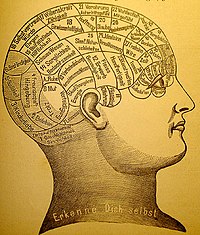
Photo from wikipedia
To advance the study of children's knowledge and understanding of disease, we devised a methodology for assessing key features of intuitive theories laid out by Wellman and Gelman (1998). We… Click to show full abstract
To advance the study of children's knowledge and understanding of disease, we devised a methodology for assessing key features of intuitive theories laid out by Wellman and Gelman (1998). We then assessed a disease-relevant biological ontology, causal propositions involving unobservables, and coherence in explanations of influenza offered by children aged 8 to 13. Use of disease-relevant terms and mention of propositions in a biological theory of flu causality, although not coherence or connectedness of ideas, increased with age. Measures were moderately correlated with one another and with a traditional Piagetian measure of level of disease understanding, each contributing uniquely to the characterization of children's thinking. In multiple regression analyses, scores were highest for older children, Latino/minority children, and children of more educated parents with other factors controlled. Specific gaps in children's intuitive theories are identified to guide theory-based interventions aimed at helping children understand and protect themselves from infectious diseases.
Journal Title: Cognitive development
Year Published: 2019
Link to full text (if available)
Share on Social Media: Sign Up to like & get
recommendations!